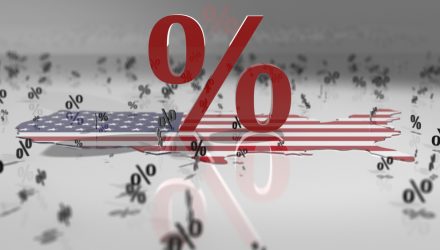A surprise 50-basis point rate cut by the Federal Reserve last week did little, if anything, to stop the bleeding amid the panic in the capital markets over the coronavirus outbreak. That was made clear by the 2,000-point drop in the Dow Jones Industrial Average during Monday’s trading session, but more central bank easing could give U.S. equities a boost, possibly.
Signs of future policy easing by the central bank were evident in gold prices, which retreated in Tuesday’s trading session.
Per a CNBC report, the price of gold “slid over 1% on Tuesday, after breaching the $1,700 ceiling in the previous session, as signs of global policy easing to cushion the economic impact from the virus epidemic eased some of the investors’ concerns. Spot gold lost 1.6% to $1,653.23 an ounce. U.S. gold futures fell 1.35% to $1,653.1.”
In the meantime, investors are shifting their positions—a sign that the low prices are flashing a buy signal for bulls.
“People are rebalancing portfolios … we expect to hear more dovish remarks from the global central banks and some policy easing,” said Michael Matousek, head trader at U.S. Global Investors.
For bullish gold investors, the hope is that any rise in equities in the short-term might merely be a slight uptick that precedes further weakness ahead.
“It could be that Tuesday’s rebounds in the equities markets could be the so-called ‘dead-cat bounce’ that occurs after major market sell-offs, only to see prices continue to trend down,” Kitco Metals senior analyst Jim Wyckoff said in a note.
A Relative Value U.S. Equities Play
Does the latest hiring trend exhibit strength for U.S. equities ahead? This creates an opportunity for investors to capitalize on the Direxion FTSE Russell US Over International ETF (NYSEArca: RWUI).
RWUI offers investors the ability to benefit not only from domestic U.S. markets potentially performing well but from their outperformance compared to international markets.
- Seeks investment results, before fees and expenses, that track the Russell 1000®/FTSE All-World ex-US 150/50 Net Spread Index (the “index”).
- The fund, under normal circumstances, invests at least 80% of its net assets (plus borrowing for investment purposes) in securities that comprise the Long Component of the index or shares of ETFs on the Long Component of the index.
- The index measures the performance of a portfolio that has 150% long exposure to the Russell 1000® Index (the “Long Component”) and 50% short exposure to the FTSE All-World ex-US Index (the “Short Component”).
For more relative market trends, visit our Relative Value Channel.


